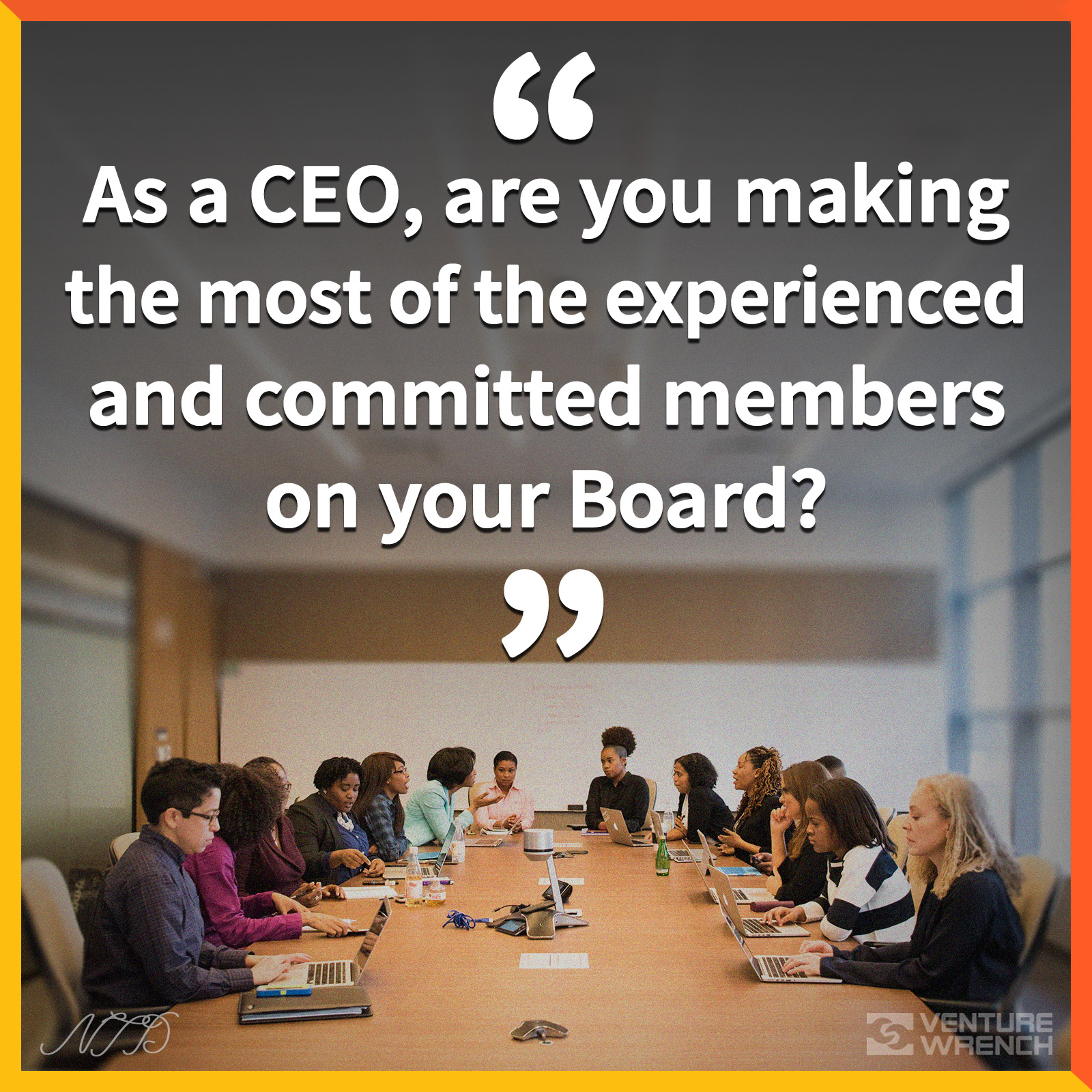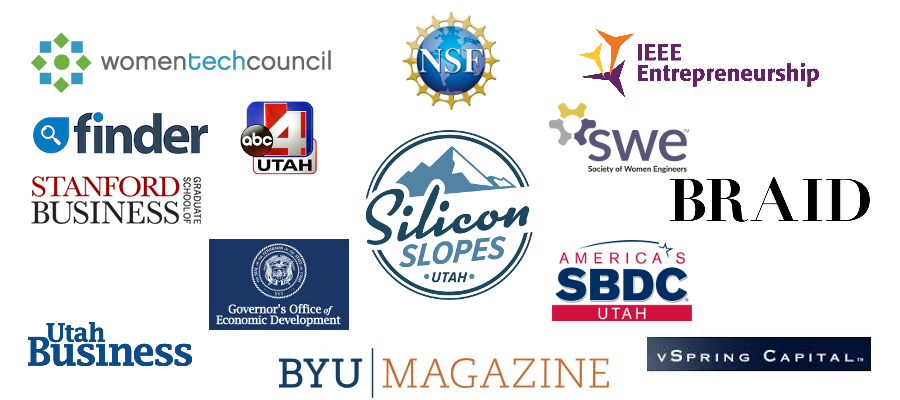This is part 2 on Advisory Boards and you can read the first part The Value of an Advisory Board (Part 1). (Don’t forget to also read my thoughts on How a Board Can Support Founder & CEO Success. Those thoughts are focused on a Board of Directors.)
 The best Advisors are people who believe in you and who believe in your deal, and who ALSO have some skills or background that can be helpful to you and your company. Remember, you need to be willing to learn from them, in order for it to be a productive relationship. Think carefully about what help you might need. It could be simply that you want an experienced entrepreneur to bounce ideas off of. It may be that you want someone who’s got scaling experience in your industry. A specialist such as a lawyer or financial pro (to help guide you how best to work with your paid pro team!) Here are some more insights (Part 2) on how to build a helpful Advisory Board.
The best Advisors are people who believe in you and who believe in your deal, and who ALSO have some skills or background that can be helpful to you and your company. Remember, you need to be willing to learn from them, in order for it to be a productive relationship. Think carefully about what help you might need. It could be simply that you want an experienced entrepreneur to bounce ideas off of. It may be that you want someone who’s got scaling experience in your industry. A specialist such as a lawyer or financial pro (to help guide you how best to work with your paid pro team!) Here are some more insights (Part 2) on how to build a helpful Advisory Board.
How do you find Advisors?
When you’re bigger and further along, you can use paid recruiters, and there are a number of firms out there. But you have a lot of options from nearly day 1. First, you have to “Design the Perfect Advisor™” (See next topic for more on this).
- Put the word out in your network (I’m putting together an Advisory Board and I’m looking for people with experience in……) Who might have potential contacts?
- Industry associations
- Fellow entrepreneurs
- Government mentoring groups (example: state, county or local economic development teams)
- Your professional service providers (lawyers, accountants, CFO/financial team)
- Reach out to programs like the Stanford Women on Boards. Stanford’s GSB (Graduate School of Business) has a formal program to both help Stanford alumni women be great Board members, and help companies find those incredible candidates. For a free board match, share your Advisory Board Opportunity.
- Reach out to your investors or potential investors or people you’d like to be investors. Don’t forget the saying “If you want advice, ask for money, if you want money, ask for advice”. Someone you might want to invest, might be very interested in being an advisor first! If you already have investors, ask them! (and if they suggest someone, grab that opportunity!)
- Look to your alumni network – some alumni networks, such as Stanford’s, are extremely responsive. Some not quite as much, but fellow alumni are often interested in helping.
- Check out your LinkedIn network – search for people within your LinkedIn network who have industry or specialized experience that would be of help to you! Use your network to reach out and introduce yourself.
- Someone you admire – You may not get a yes, but you really don’t have much to lose but a small amount of time, to ask someone you admire if they would be interested in considering a role on your Advisory Board. They won’t say yes right away, but if they’re reasonably impressed, they’ll dig in to see if it’s an opportunity to them.
Is there any specific background for someone who will sit on your Advisory Board?
First, you have to “Design the Perfect Advisor™”. What kind of expertise would help you? General innovation? entrepreneurship? industry specific? vertical expertise? organizational or management skills? Get clear on what you need, and then go looking for it. Just like with investors, you’ll get a much more successful Advisory Board if you know what you need.
What can an Advisory Board help with?
Phew! The real question is what can’t they help with? As long as you’re clear about the help you need, and go look for it. One recent article on advisory boards suggested that celebrities can add some glamor. Well, maybe, and that might help you (more likely it’s the marketing value and the contact list that will really help you!). But focus on what YOU and your company need and you’ll find your Advisory Board can really help you navigate entrepreneurship successfully.
How do I establish boundaries for my Advisors
It’s best to talk up front with potential Advisors, while they are still in the potential phase, and let them know what you need, why you are considering them, where your company is and at least some of the issues it faces. They will become insiders and hopefully a source of strength for you and your company. If, in the early discussions, the relationship doesn’t seem to gel, then don’t move ahead with the relationship!
What if one of my Advisors says “that’s too big of an ask” for something specific (and they’ve been helpful otherwise)?
In truth, your Advisors are people too, and they have varying demands on their time as well. Usually they are employed, whether full time with a larger organization, they’re entrepreneurs themselves, or they’re advising multiple teams like yours. Sometimes your ask is at a bad time. Sometimes your ask is to have them perform a task that is more appropriate to a paid member of your team (employee, consultant or service provider). For example a financially oriented advisor isn’t there to do your books, but to help you develop your financial strategy, watch for sinkholes etc. Don’t ask them to do work that your financial team should be doing. And don’t take offense if they say no.
If they always say no to everything you ask and they’re always too busy, then they’re not really part of your Advisory team, are they? In which case, see Part 1 of the Advisory Board discussion and the issue of vesting!
If you are planning to raise funding for your startup,
Get our FREE VentureWrench Guide to Investor Capital
50 pages of insider insights to help you succeed!
 If you want more in depth help, either a proposal review or help developing your proposal, you can apply for a spot in our one-on-one VentureWrench SBIR Coaching after you’ve gone through the course. Email us at venturewrenchcommunity [at] gmail.com with questions.
If you want more in depth help, either a proposal review or help developing your proposal, you can apply for a spot in our one-on-one VentureWrench SBIR Coaching after you’ve gone through the course. Email us at venturewrenchcommunity [at] gmail.com with questions.
And if you need help with any part of your SBIR process – proposal (Phase I or II), TABA, proposal management, or contract finalization, just email us at venturewrenchcommunity [at] gmail.com with questions.
Don’t forget, if you need more help, check out our online course, Develop a Winning SBIR Strategy, and don’t forget your free guide below!

